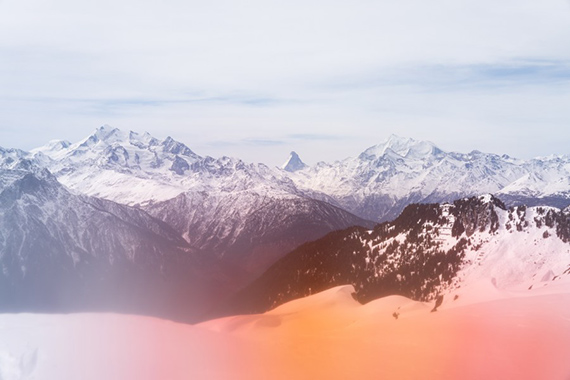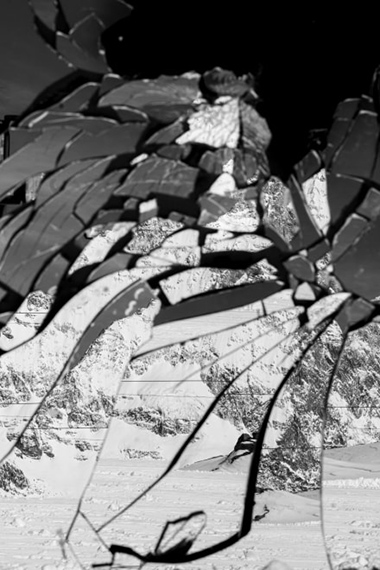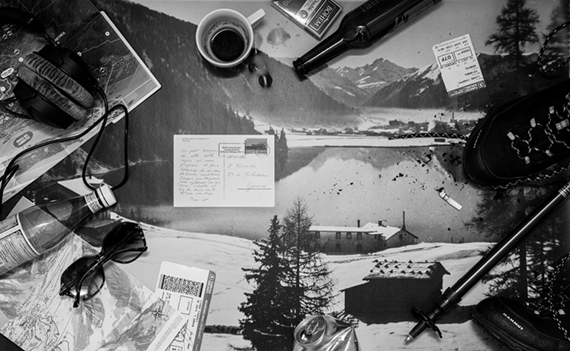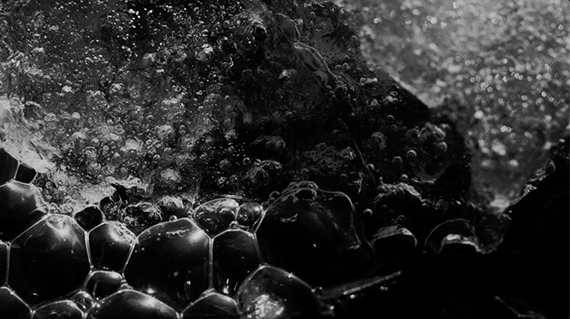
Yingfei Liang »
The Death of Giants
Exhibition: 14 Oct – 31 Dec 2023

Three Shadows Photography Art Center
No.155, Caochangdi, Chaoyang District
100015 Beijing
+86-10-64322663
info@threeshadows.cn
threeshadows.cn/
Tue-Sun 10-18

Three Shadows Photography Art Centre feels pleasure to announce that we will present “The Death of Giants” from 14 October to 31 December 2023, which will present a comprehensive collection of more than fifty works, including photographs, videos, and installations, created by the artist Liang Yingfei during her residency in the Monthey region of Switzerland at the beginning of this year.
Ice, as the source of water, is the true origin of life. Distant iceberg melted, becoming trickles of water, nourishing everything on earth. Tracing back into The Prose Edda, the world originated from a cow made from thawing frost, Audhumla. Four rivers of milk ran out from her teats, and she fed Ymir whose body parts composed the world. The cow made from frost can indeed be the best incarnation of glacier. Underneath the glacier, surface of stones were continuously ground. The ground mineral then made the trickle milky white, which served as the best fertilizer for farmlands and grasslands[1].
Within the school of psychoanalysis, even analysts with conflicted convictions are all clear about myths being the essential language in psychoanalysis[2]. To examine the myth from a psychoanalytic perspective, in human’s recognition, cow is the one that dedicates its whole life to helping mankind with farm work and nurturing them with its milk. Therefore, the mythical cow, as the incarnation of glacier, can capture the violence deeply rooted in the collective subconscious of mankind because except from being the motherland providing mankind with essentials to survive, glacier is also what mankind wants to conquer and control.
The notion of ‘collective unconscious’ came from the iceberg model proposed by the Swiss psychologist Carl Jung. According to Jung, the psyche is divided into the ego, the personal unconscious, and the collective unconscious[3]. He thinks that below the iceberg of one’s conscious mind, lies the invisible subconscious which decides most of mankind’s behaviors and expressions, whereas the creation of myths often carries with it a complex symbol, based on the fact that mankind longs to know the environment and explore the ultimate meaning of life. Therefore, the myths tend to embody an abundance of collective subconscious. The European myth goes that the Mountain Alps has been cursed[4], which may be because of humans’ fear for the potential destructive power of this giant piles of stones.

Historian James Oliver Robertson in American Myth, American Reality even defined myth as ‘what makes us into one’[5]. It is the myth that pierces the surface of everything and points directly to the collective subconscious of mankind. It harbors the truth transcending time and space and masters our thoughts, therefore making us into one. For instance, to use cow as the incarnation of glacier is not confined to Nordic myths. In the mountainous area of the Himalayas, the connection between the cow and the glacier can be seen everywhere. The icicle in the ice cave is called ‘the breast of cow’. When the ice floe breaks away from the ice chunk, it will be called ‘calf’[6]. Dreams and myths often harbor the wish and thoughts of humans[7], Thus, unknowingly in our collective awareness, we see the glacier as a selfless, dedicated and laborious cow, toiling without asking for something in return.
When Yingfei was in residence, she was inspired by what Jung proposed as ‘Myths are involuntary statements about unconscious psychic happenings’[8] and borrowed the character and structure from the myths to create a series of images and videos. Among her works, there are not only personal histories of residents in Swiss mountains, family photo albums, the data recording glacier retreat, but also re-creations using second-hand postcards and domestic waste. These works present the long-time connection between the Swiss people and glaciers, and explore their complex and profound emotions towards the nature. The use of mythological narratives is also to break the connection between the residents of the small town of Monthey and the glacier away from time and space, and to resonate with what lies in our subconscious — the relationship with nature and other beings.
The glacier is what provides the source of energy, and it is also the mother earth that contains a mysterious atmosphere. Countless lives are overwhelmed by its magnificent beauty and unknowingly absorb its nutrients, but there are also many lives swallowed by it and permanently buried within. Therefore, people feel awed by and afraid of it. The global warming melts the hard white blocks and raises the water level, thus the ghosts of the past buried deep in the iceberg resurface[9]. The glacier is alive, and it has always been moving and changing. But the accelerated rise in global temperature has led to changes in the life trajectory of the glacier. In the chapter Sweet Home, the residents of Monthey wrote: “Over time, the mountains have changed. The glaciers have retreated a lot, and the avalanche has destroyed the forest. It used to snow in December, but now the Christmas is ‘green’.”
The massive glacier is just like the aging Giant, left only with death. If the glacier dies, human life will also come to an end. Reflecting on the death of glacier is also to ponder over how should we live the life. At this silent night, I feel as though I’m hearing the sound of the glacier melting. This unheard concert will immediately turn into dying cries for help. Do you hear it?


